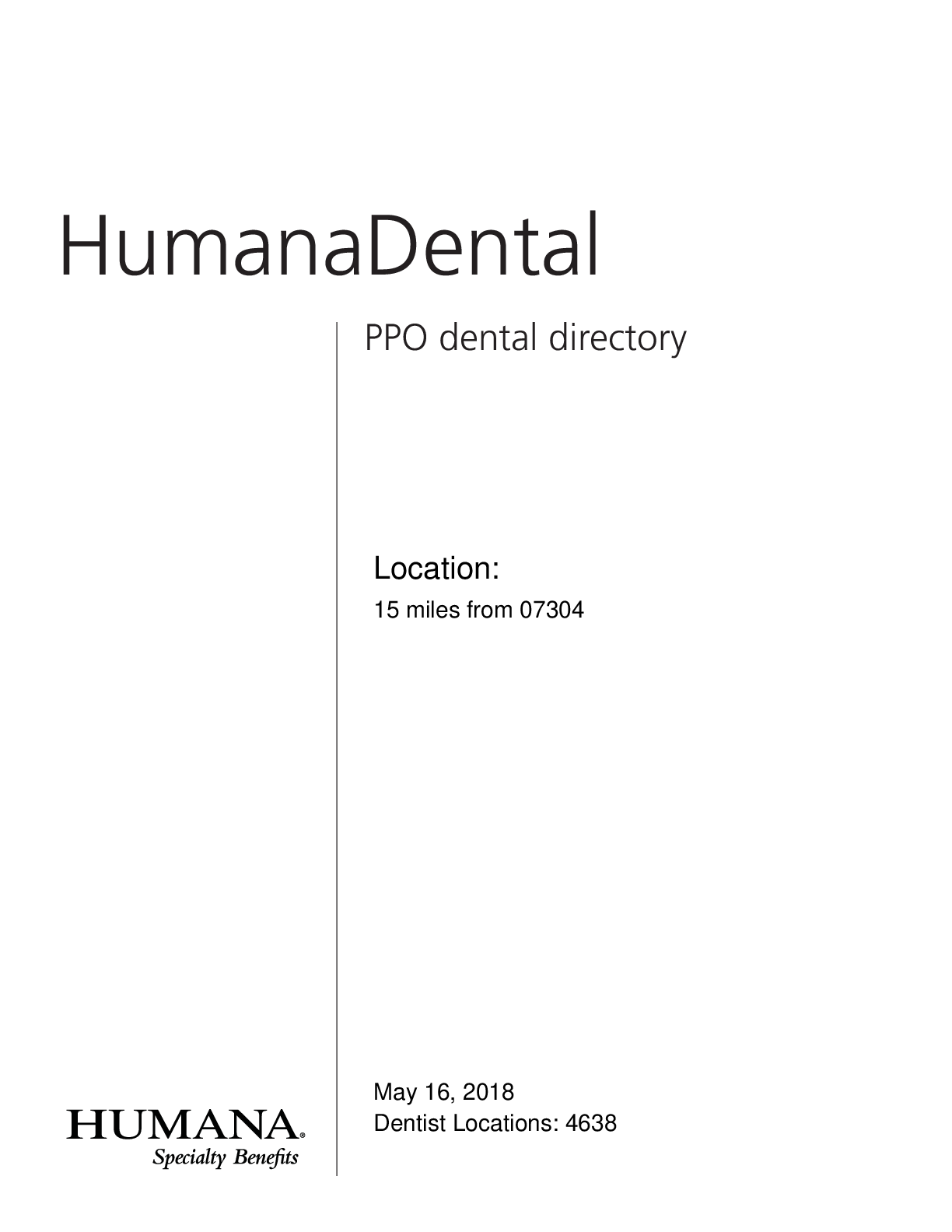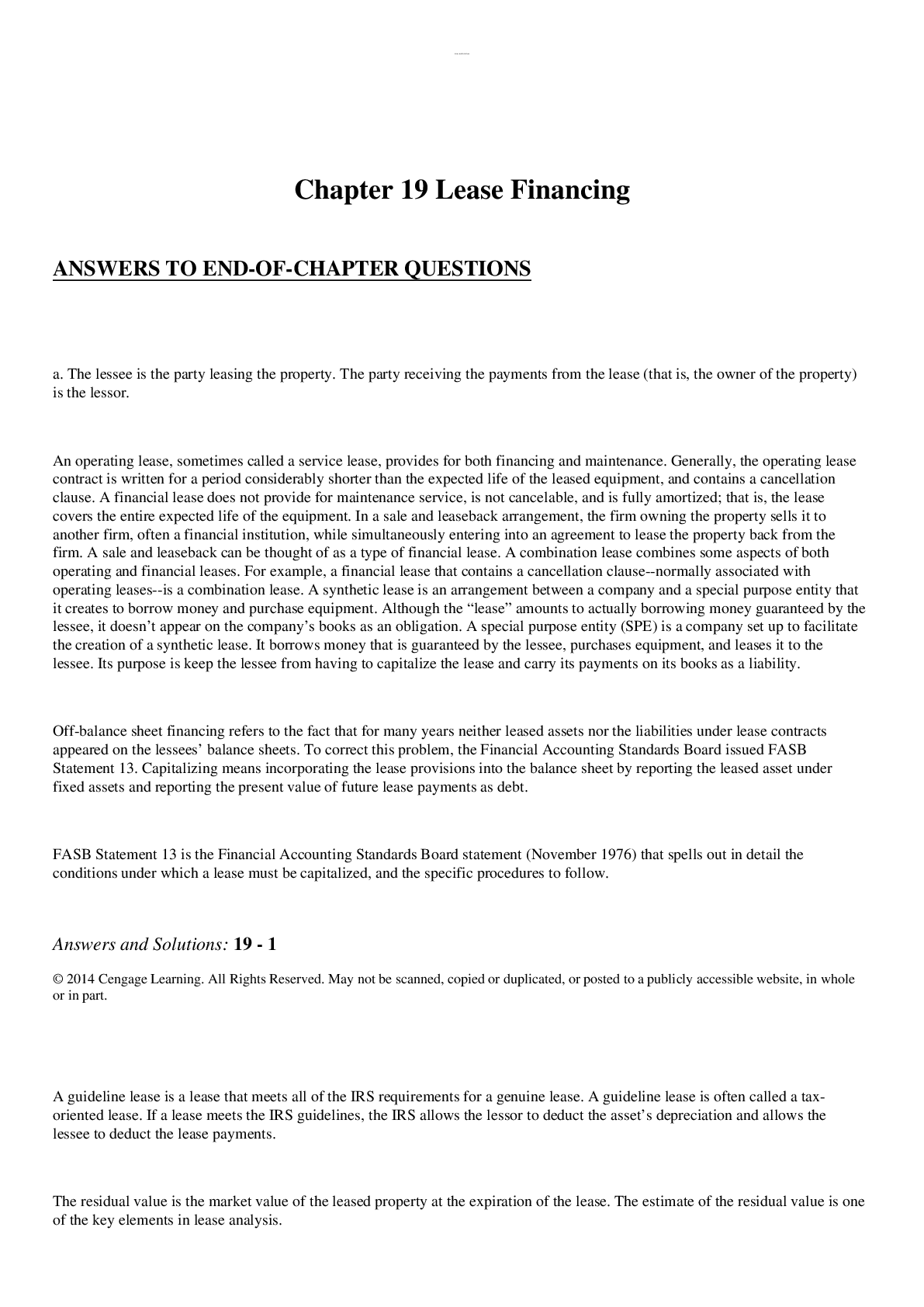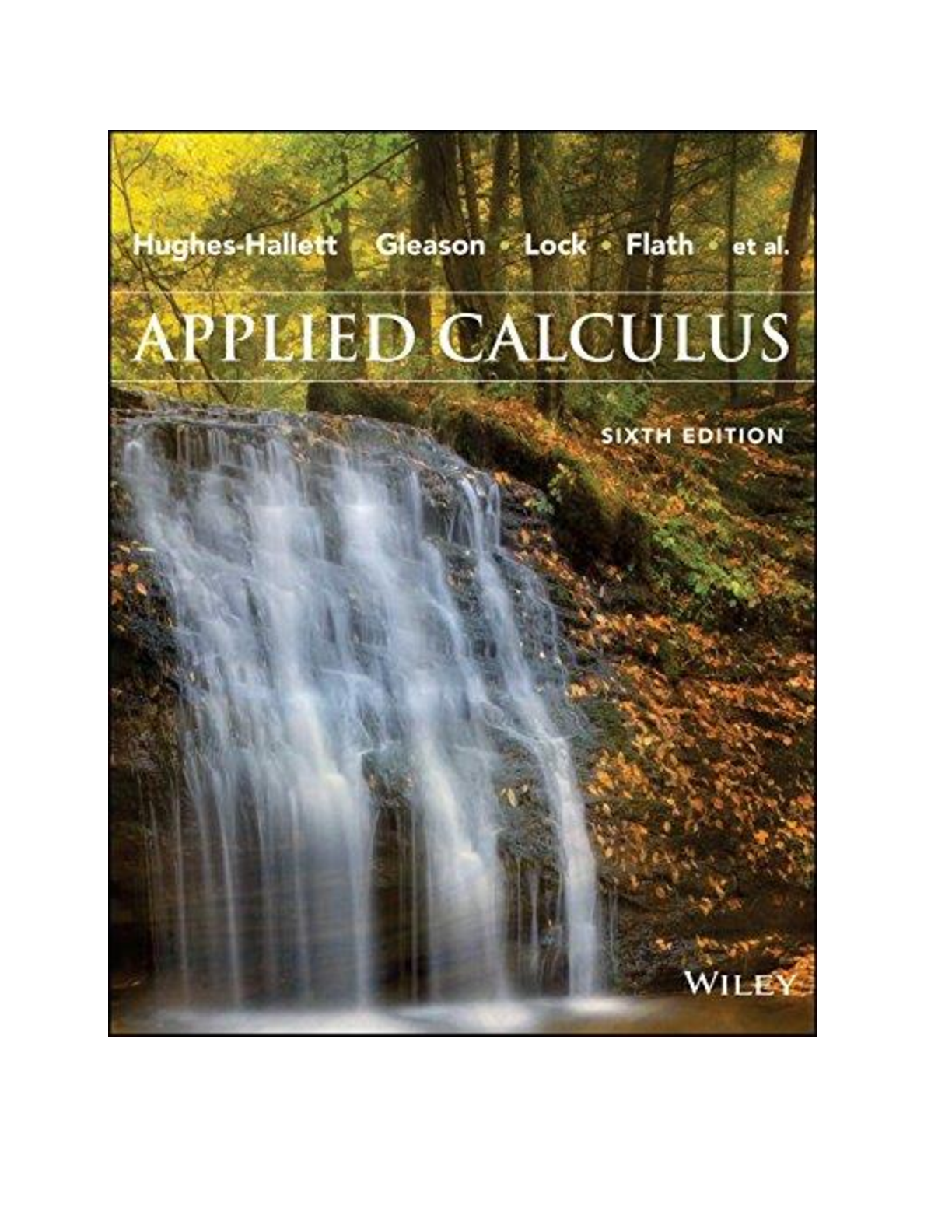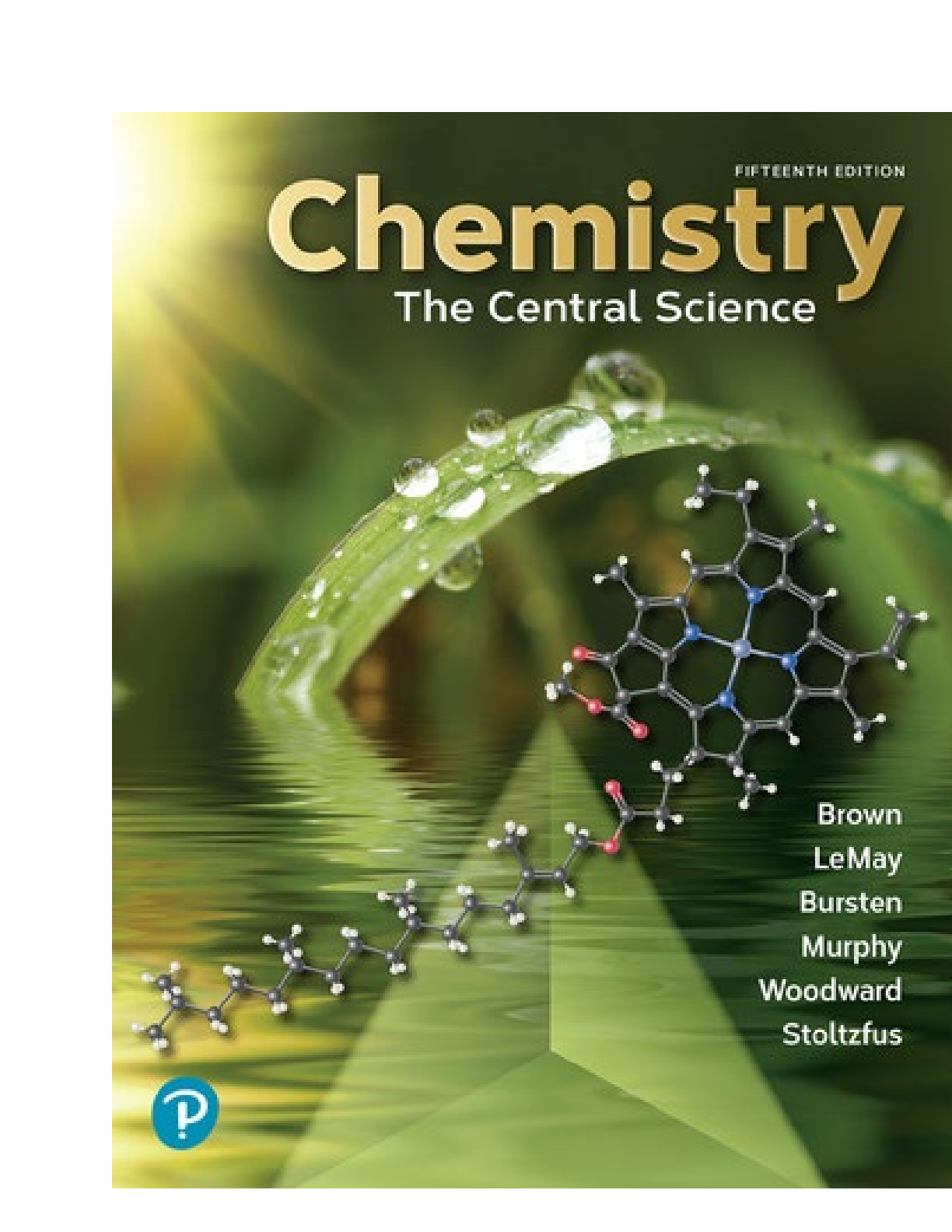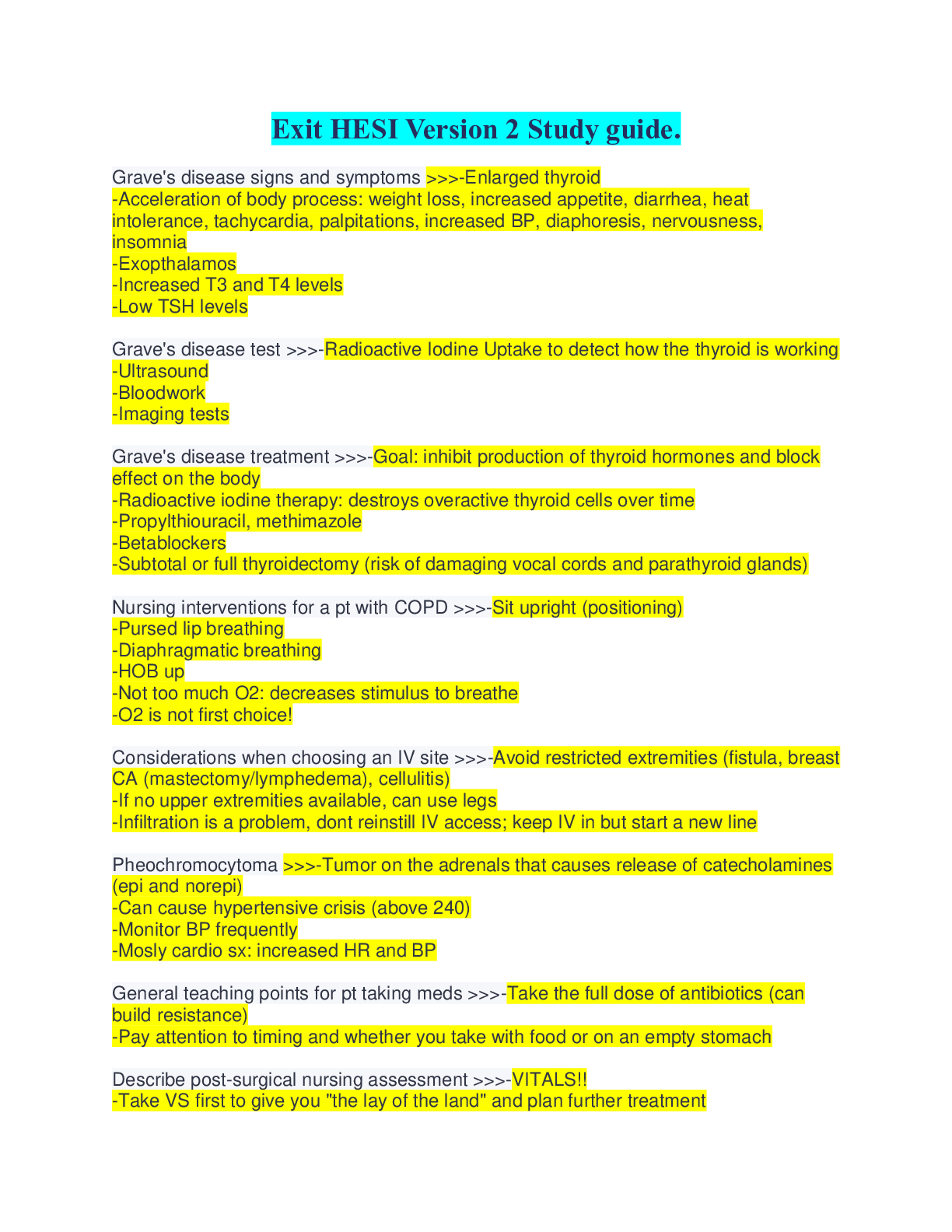Chemistry > Solutions Guide > Solution Manual for Organic Chemistry 12th Edition W. Graham Solomons Craig B. Fryhle and Scott A. (All)
Solution Manual for Organic Chemistry 12th Edition W. Graham Solomons Craig B. Fryhle and Scott A. Snyder-ALL 1-25 Chapters included- Download to Ace your Exams the first round!!
Document Content and Description Below
Solution Manual for Organic Chemistry 12th Edition W. Graham Solomons Craig B. Fryhle and Scott A. Snyder-ALL 1-25 Chapters included- Download to Ace your Exams the first round!!The Chemistry of…... Natural Products 3 1 2 Atomic Structure 3 1 3 Chemical Bonds: The Octet Rule 5 1 4 How To Write Lewis Structures 7 1 5 Formal Charges and How To Calculate Them 12 1 6 Isomers: Different Compounds that Have the Same Molecular Formula 14 1 7 How To Write and Interpret Structural Formulas 15 1 8 Resonance Theory 22 1 9 Quantum Mechanics and Atomic Structure 27 1 10 Atomic Orbitals and Electron Configuration 28 1 11 Molecular Orbitals 30 1 12 The Structure of Methane and Ethane: sp3 Hybridization 32 The Chemistry of… Calculated Molecular Models: Electron Density Surfaces 36 1 13 The Structure of Ethene (Ethylene): sp 2 Hybridization 36 1 14 The Structure of Ethyne (Acetylene): sp Hybridization 40 1 15 A Summary of Important Concepts that Come from Quantum Mechanics 43 1 16 How To Predict Molecular Geometry: The Valence Shell Electron Pair Repulsion Model 44 1 17 Applications of Basic Principles 47 2 Families of Carbon Compounds Functional Groups, Intermolecular Forces, and Infrared (IR) Spectroscopy 55 2 1 Hydrocarbons: Representative Alkanes, Alkenes, Alkynes, and Aromatic Compounds 56 2 2 Polar Covalent Bonds 59 2 3 Polar and Nonpolar Molecules 61 2 4 Functional Groups 64 2 5 Alkyl Halides or Haloalkanes 65 2 6 Alcohols and Phenols 67 2 7 Ethers 69 The Chemistry of… Ethers as General Anesthetics 69 2 8 Amines 70 2 9 Aldehydes and Ketones 71 2 10 Carboxylic Acids, Esters, and Amides 73 2 11 Nitriles 75 2 12 Summary of Important Families of Organic Compounds 76 2 13 Physical Properties and Molecular Structure 77 The Chemistry of… Fluorocarbons and Teflon 81 2 14 Summary of Attractive Electric Forces 85 The Chemistry of… Organic Templates Engineered to Mimic Bone Growth 86 2 15 Infrared Spectroscopy: An Instrumental Method for Detecting Functional Groups 86 2 16 Interpreting IR Spectra 90 2 17 Applications of Basic Principles 97 3 Acids and Bases An Introduction to Organic Reactions and Their Mechanisms 104 3 1 Acid–Base Reactions 105 3 2 How To Use Curved Arrows in Illustrating Reactions 107 3 3 Lewis Acids and Bases 109 3 4 Heterolysis of Bonds to Carbon: Carbocations and Carbanions 111 5 SturdyDrone 3 5 The Strength of Brønsted–Lowry Acids and Bases: Ka and pKa 113 3 6 How To Predict the Outcome of Acid–Base Reactions 118 3 7 Relationships between Structure and Acidity 120 3 8 Energy Changes 123 3 9 The Relationship between the Equilibrium Constant and the Standard Free-Energy Change, ΔG ° 125 3 10 Acidity: Carboxylic Acids versus Alcohols 126 3 11 The Effect of the Solvent on Acidity 132 3 12 Organic Compounds as Bases 132 3 13 A Mechanism for an Organic Reaction 134 3 14 Acids and Bases in Nonaqueous Solutions 135 3 15 Acid–Base Reactions and the Synthesis of Deuterium- and Tritium-Labeled Compounds 136 3 16 Applications of Basic Principles 137 4 Nomenclature and Conformations of Alkanes and Cycloalkanes 4 1 Introduction to Alkanes and Cycloalkanes 145 The Chemistry of… Petroleum Refining 145 4 2 Shapes of Alkanes 146 4 3 How To Name Alkanes, Alkyl Halides, and Alcohols: The IUPAC System 148 4 4 How to Name Cycloalkanes 155 4 5 How To Name Alkenes and Cycloalkenes 158 4 6 How To Name Alkynes 160 4 7 Physical Properties of Alkanes and Cycloalkanes 161 The Chemistry of… Pheromones: Communication by Means of Chemicals 163 4 8 Sigma Bonds and Bond Rotation 164 4 9 Conformational Analysis of Butane 166 The Chemistry of… Muscle Action 168 4 10 The Relative Stabilities of Cycloalkanes: Ring Strain 168 4 11 Conformations of Cyclohexane: The Chair and the Boat 170 The Chemistry of… Nanoscale Motors and Molecular Switches 172 4 12 Substituted Cyclohexanes: Axial and Equatorial Hydrogen Groups 173 4 13 Disubstituted Cycloalkanes: Cis–Trans Isomerism 177 4 14 Bicyclic and Polycyclic Alkanes 181 4 15 Chemical Reactions of Alkanes 182 4 16 Synthesis of Alkanes and Cycloalkanes 182 4 17 How To Gain Structural Information from Molecular Formulas and the Index of Hydrogen Deficiency 184 4 18 Applications of Basic Principles 186 5 Stereochemistry Chiral Molecules 193 5 1 Chirality and Stereochemistry 194 5 2 Isomerism: Constitutional Isomers and Stereoisomers 195 5 3 Enantiomers and Chiral Molecules 197 5 4 Molecules Having One Chirality Center are Chiral 198 5 5 More about the Biological Importance of Chirality 201 5 6 How To Test for Chirality: Planes of Symmetry 203 5 7 Naming Enantiomers: The R,S-System 204 5 8 Properties of Enantiomers: Optical Activity 208 5 9 Racemic Forms 213 5 10 The Synthesis of Chiral Molecules 214 5 11 Chiral Drugs 216 The Chemistry of… Selective Binding of Drug Enantiomers to Left- and Right-Handed Coiled DNA 218 6 SturdyDrone 5 12 Molecules with More than One Chirality Center 218 5 13 Fischer Projection Formulas 224 5 14 Stereoisomerism of Cyclic Compounds 226 5 15 Relating Configurations through Reactions in Which No Bonds to the Chirality Center Are Broken 228 5 16 Separation of Enantiomers: Resolution 232 5 17 Compounds with Chirality Centers Other than Carbon 233 5 18 Chiral Molecules that Do Not Possess a Chirality Center 233 6 Nucleophilic Reactions Properties and Substitution Reactions of Alkyl Halides 240 6 1 Alkyl Halides 241 6 2 Nucleophilic Substitution Reactions 242 6 3 Nucleophiles 244 6 4 Leaving Groups 246 6 5 Kinetics of a Nucleophilic Substitution Reaction: An SN2 Reaction 246 6 6 A Mechanism for the SN2 Reaction 247 6 7 Transition State Theory: Free-Energy Diagrams 249 6 8 The Stereochemistry of SN2 Reactions 252 6 9 The Reaction of tert-Butyl Chloride with Water: An SN1 Reaction 254 6 10 A Mechanism for the SN1 Reaction 255 6 11 Carbocations 257 6 12 The Stereochemistry of SN1 Reactions 259 6 13 Factors Affecting the Rates of SN1 and SN2 Reactions 262 6 14 Organic Synthesis: Functional Group Transformations Using SN2 Reactions 272 The Chemistry of… Biological Methylation: A Biological Nucleophilic Substitution Reaction 273 7 Alkenes and Alkynes I Properties and Synthesis Elimination Reactions of Alkyl Halides 282 7 1 Introduction 283 7 2 The (E )–(Z ) System for Designating Alkene Diastereomers 283 7 3 Relative Stabilities of Alkenes 284 7 4 Cycloalkenes 287 7 5 Synthesis of Alkenes: Elimination Reactions 287 7 6 Dehydrohalogenation 288 7 7 The E2 Reaction 289 7 8 The E1 Reaction 297 7 9 Elimination and Substitution Reactions Compete With Each Other 299 7 10 Elimination of Alcohols: Acid-Catalyzed Dehydration 303 7 11 Carbocation Stability and the Occurrence of Molecular Rearrangements 308 7 12 The Acidity of Terminal Alkynes 312 7 13 Synthesis of Alkynes by Elimination Reactions 313 7 14 Terminal Alkynes Can Be Converted to Nucleophiles for Carbon–Carbon Bond Formation 315 7 15 Hydrogenation of Alkenes 317 The Chemistry of… Hydrogenation in the Food Industry 318 7 16 Hydrogenation: The Function of the Catalyst 319 7 17 Hydrogenation of Alkynes 320 7 18 An Introduction to Organic Synthesis 322 The Chemistry of… From the Inorganic to the Organic 324 8 Alkenes and Alkynes II Addition Reactions 337 8 1 Addition Reactions of Alkenes 338 8 2 Electrophilic Addition of Hydrogen Halides to Alkenes: Mechanism and Markovnikov’s Rule 340 7 SturdyDrone 8 3 Stereochemistry of the Ionic Addition t o an Alkene 345 8 4 Addition of Water to Alkenes: Acid-Catalyzed Hydration 346 8 5 Alcohols from Alkenes through Oxymercuration–Demercuration: Markovnikov Addition 349 8 6 Alcohols from Alkenes through Hydroboration–Oxidation: Anti-Markovnikov Syn Hydration 352 8 7 Hydroboration: Synthesis of Alkylboranes 353 8 8 Oxidation and Hydrolysis of Alkylboranes 355 8 9 Summary of Alkene Hydration Methods 358 8 10 Protonolysis of Alkylboranes 359 8 11 Electrophilic Addition of Bromine and Chlorine to Alkenes 359 The Chemistry of… The Sea: A Treasury of Biologically Active Natural Products 362 8 12 Stereospecific Reactions 363 8 13 Halohydrin Formation 364 The Chemistry of… Citrus-Flavored Soft Drinks 366 8 14 Divalent Carbon Compounds: Carbenes 366 8 15 Oxidation of Alkenes: Syn 1,2-Dihydroxylation 368 The Chemistry of… Catalytic Asymmetric Dihydroxylation 370 8 16 Oxidative Cleavage of Alkenes 371 8 17 Electrophilic Addition of Bromine and Chlorine to Alkynes 374 8 18 Addition of Hydrogen Halides to Alkynes 374 8 19 Oxidative Cleavage of Alkynes 375 8 20 How to Plan a Synthesis: Some Approaches and Examples 376 9 Nuclear Magnetic Resonance and Mass Spectrometry Tools for Structure Determination 391 9 1 Introduction 392 9 2 Nuclear Magnetic Resonance (NMR) Spectroscopy 392 9 3 How To Interpret Proton NMR Spectra 398 9 4 Shielding and Deshielding of Protons: More about Chemical Shift 401 9 5 Chemical Shift Equivalent and Nonequivalent Protons 403 9 6 Spin–Spin Coupling: More about Signal Splitting and Nonequivalent or Equivalent Protons 407 9 7 Proton NMR Spectra and Rate Processes 412 9 8 Carbon-13 NMR Spectroscopy 414 9 9 Two-Dimensional (2D) NMR Techniques 420 The Chemistry of… Magnetic Resonance Imaging in Medicine 423 9 10 An Introduction to Mass Spectrometry 423 9 11 Formation of Ions: Electron Impact Ionization 424 9 12 Depicting the Molecular Ion 424 9 13 Fragmentation 425 9 14 Isotopes in Mass Spectra 432 9 15 GC/MS Analysis 435 9 16 Mass Spectrometry of Biomolecules 436 10 Radical Reactions 10 1 Introduction: How Radicals Form and How They React 449 Hydrogen Atom Abstraction 450 The Chemistry of… Acne Medications 450 10 2 Homolytic Bond Dissociation Energies (DH °) 451 10 3 Reactions of Alkanes with Halogens 454 10 4 Chlorination of Methane: Mechanism of Reaction 456 10 5 Halogenation of Higher Alkanes 459 10 6 The Geometry of Alkyl Radicals 462 10 7 Reactions that Generate Tetrahedral Chirality Centers 462 8 SturdyDrone 10 8 Allylic Substitution and Allylic Radicals 466 10 9 Benzylic Substitution and Benzylic Radicals 469 10 10 Radical Addition to Alkenes: The Anti-Markovnikov Addition of Hydrogen Bromide 472 10 11 Radical Polymerization of Alkenes: Chain-Growth Polymers 474 10 12 Other Important Radical Reactions 478 The Chemistry of… Antioxidants 480 The Chemistry of… Ozone Depletion and Chlorofluorocarbons (CFCs) 481 11 Alcohols and Ethers Synthesis and Reactions 489 11 1 Structure and Nomenclature 490 11 2 Physical Properties of Alcohols and Ethers 492 11 3 Important Alcohols and Ethers 494 The Chemistry of… Ethanol as a Biofuel 495 The Chemistry of… Cholesterol and Heart Disease 496 11 4 Synthesis of Alcohols from Alkenes 496 11 5 Reactions of Alcohols 498 11 6 Alcohols as Acids 500 11 7 Conversion of Alcohols into Alkyl Halides 501 11 8 Alkyl Halides from the Reaction of Alcohols with Hydrogen Halides 501 11 9 Alkyl Halides from the Reaction of Alcohols with PBr3 or SOCl2 504 11 10 Tosylates, Mesylates, and Triflates: Leaving Group Derivatives of Alcohols 505 11 11 Synthesis of Ethers 507 11 12 Reactions of Ethers 513 11 13 Epoxides 514 The Chemistry of… The Sharpless Asymmetric Epoxidation 515 11 14 Reactions of Epoxides 516 11 15 Anti 1,2-Dihydroxylation of Alkenes via Epoxides 519 The Chemistry of… Environmentally Friendly Alkene Oxidation Methods 521 11 16 Crown Ethers 522 The Chemistry of… Transport Antibiotics and Crown Ethers 523 11 17 Summary of Reactions of Alkenes, Alcohols, and Ethers 523 12 Alcohols from Carbonyl Compounds Oxidation –Reduction and Organometallic Compounds 534 12 1 Structure of the Carbonyl Group 535 12 2 Oxidation–Reduction Reactions in Organic Chemistry 536 12 3 Alcohols by Reduction of Carbonyl Compounds 537 The Chemistry of… Alcohol Dehydrogenase— A Biochemical Hydride Reagent 539 The Chemistry of… Stereoselective Reductions of Carbonyl Groups 541 12 4 Oxidation of Alcohols 542 12 5 Organometallic Compounds 547 12 6 Preparation of Organolithium and Organomagnesium Compounds 548 12 7 Reactions of Organolithium and Organomagnesium Compounds 549 12 8 Alcohols from Grignard Reagents 552 12 9 Protecting Groups 561 13 Conjugated Unsaturated Systems 13 1 Introduction 573 13 2 The Stability of the Allyl Radical 573 13 3 The Allyl Cation 577 13 4 Resonance Theory Revisited 578 13 5 Alkadienes and Polyunsaturated Hydrocarbons 582 9 SturdyDrone 13 6 1,3-Butadiene: Electron Delocalization 583 13 7 The Stability of Conjugated Dienes 586 13 8 U ltraviolet–Visible Spectroscopy 587 13 9 Electrophilic Attack on Conjugated Dienes: 1,4-Addition 595 13 10 The Diels–Alder Reaction: A 1,4-Cycloaddition Reaction of Dienes 599 The Chemistry of… Molecules with the Nobel Prize in Their Synthetic Lineage 608 14 Aromatic Compounds 14 1 The Discovery of Benzene 618 14 2 Nomenclature of Benzene Derivatives 619 14 3 Reactions of Benzene 621 14 4 The Kekulé Structure for Benzene 622 14 5 The Thermodynamic Stability of Benzene 623 14 6 Modern Theories of the Structure of Benzene 625 14 7 Hückel’s Rule: The 4n + 2 π Electron Rule 628 14 8 Other Aromatic Compounds 636 The Chemistry of… Nanotubes 639 14 9 Heterocyclic Aromatic Compounds 639 14 10 Aromatic Compounds in Biochemistry 641 The Chemistry of… Aryl Halides: Their Uses and Environmental Concerns 643 14 11 Spectroscopy of Aromatic Compounds 644 The Chemistry of… Sunscreens (Catching the Sun’s Rays and What Happens to Them) 648 15 Reactions of Aromatic Compounds 15 1 Electrophilic Aromatic Substitution Reactions 661 15 2 A General Mechanism for Electrophilic Aromatic Substitution 662 15 3 Halogenation of Benzene 664 15 4 Nitration of Benzene 665 15 5 Sulfonation of Benzene 666 15 6 Friedel–Crafts Reactions 668 The Chemistry of… Industrial Styrene Synthesis 669 15 7 Synthetic Applications of Friedel–Crafts Acylations: The Clemmensen and Wolff–Kishner Reductions 673 The Chemistry of… DDT 676 15 8 Existing Substituents Direct the Position of Electrophilic Aromatic Substitution 677 15 9 Activating and Deactivating Effects: How Electron-Donating and Electron-Withdrawing Groups Affect the Rate of an EAS Reaction 684 15 10 Directing Effects in Disubstituted Benzenes 685 15 11 Reactions of Benzene Ring Carbon Side Chains 686 15 12 Synthetic Strategies 689 15 13 The SNAr Mechanism: Nucleophilic Aromatic Substitution by Addition-Elimination 691 The Chemistry of… Bacterial Dehalogenation of a PCB Derivative 693 15 14 Benzyne: Nucleophilic Aromatic Substitution by Elimination– Addition 694 The Chemistry of… Host–Guest Trapping of Benzyne 697 15 15 Reduction of Aromatic Compounds 697 16 Aldehydes and Ketones Nucleophilic Addition to the Carbonyl Group 711 16 1 Introduction 712 16 2 Nomenclature of Aldehydes and Ketones 712 16 3 Physical Properties 714 The Chemistry of… Aldehydes and Ketones in Perfumes 715 16 4 Synthesis of Aldehydes 715 16 5 Synthesis of Ketones 720 16 6 Nucleophilic Addition to the Carbon–Oxygen Double Bond: Mechanistic Themes 723 10 SturdyDrone 16 7 The Addition of Alcohols: Hemiacetals and Acetals 726 16 8 The Addition of Primary and Secondary Amines 731 The Chemistry of… A Very Versatile Vitamin, Pyridoxine (Vitamin B6) 735 16 9 The Addition of Hydrogen Cyanide: Cyanohydrins 736 16 10 The Addition of Ylides: The Wittig Reaction 737 16 11 Oxidation of Aldehydes 741 16 12 The Baeyer–Villiger Oxidation 741 16 13 Chemical Analyses for Aldehydes and Ketones 743 16 14 Spectroscopic Properties of Aldehydes and Ketones 743 16 15 Summary of Aldehyde and Ketone Addition Reactions 746 17 Carboxylic Acids and Their Derivatives Nucleophilic Addition – Elimination at the Acyl Carbon 761 17 1 Introduction 762 17 2 Nomenclature and Physical Properties 762 17 3 Preparation of Carboxylic Acids 770 17 4 Acyl Substitution: Nucleophilic Addition–Elimination at the Acyl Carbon 773 17 5 Acyl Chlorides 775 17 6 Carboxylic Acid Anhydrides 777 17 7 Esters 778 17 8 Amides 784 The Chemistry of… Some Hot Topics Related to Structure and Activity 787 The Chemistry of… Penicillins 792 17 9 Derivatives of Carbonic Acid 792 17 10 Decarboxylation of Carboxylic Acids 795 17 11 Polyesters and Polyamides: Step-Growth Polymers 797 17 12 Summary of the Reactions of Carboxylic Acids and Their Derivatives 798 18 Reactions at the α Carbon of Carbonyl Compounds Enols and Enolates 811 18 1 The Acidity of the α Hydrogens of Carbonyl Compounds: Enolate Anions 812 18 2 Keto and Enol Tautomers 813 18 3 Reactions via Enols and Enolates 815 The Chemistry of… Chloroform in Drinking Water 819 18 4 Lithium Enolates 821 18 5 Enolates of β-Dicarbonyl Compounds 824 18 6 Synthesis of Methyl Ketones: The Acetoacetic Ester Synthesis 825 18 7 Synthesis of Substituted Acetic Acids: The Malonic Ester Synthesis 830 18 8 Further Reactions of Active Hydrogen Compounds 833 18 9 Synthesis of Enamines: Stork Enamine Reactions 834 18 10 Summary of Enolate Chemistry 837 19 Condensation and Conjugate Addition Reactions of Carbonyl Compounds More Chemistry of Enolates 849 19 1 Introduction 850 19 2 The Claisen Condensation: A Synthesis of β-Keto Esters 850 19 3 β-Dicarbonyl Compounds by Acylation of Ketone Enolates 855 19 4 Aldol Reactions: Addition of Enolates and Enols to Aldehydes and Ketones 856 The Chemistry of… A Retro-Aldol Reaction in Glycolysis—Dividing Assets to Double the ATP Yield 860 19 5 Crossed Aldol Condensations 861 19 6 Cyclizations via Aldol Condensations 867 The Chemistry of… Polyketide Anticancer Antibiotic Biosynthesis 868 19 7 Additions to α,β-Unsaturated Aldehydes and Ketones 869 11 SturdyDrone The Chemistry of… Conjugate Additions to Activate Drugs 873 19 8 The Mannich Reaction 874 The Chemistry of… A Suicide Enzyme Substrate 875 19 9 Summary of Important Reactions 876 20 Amines 20 1 Nomenclature 891 20 2 Physical Properties and Structure of Amines 892 20 3 Basicity of Amines: Amine Salts 894 The Chemistry of… Biologically Important Amines 899 20 4 Preparation of Amines 901 20 5 Reactions of Amines 909 20 6 Reactions of Amines with Nitrous Acid 911 The Chemistry of… N -Nitrosoamines 912 20 7 Replacement Reactions of Arenediazonium Salts 913 20 8 Coupling Reactions of Arenediazonium Salts 917 20 9 Reactions of Amines with Sulfonyl Chlorides 919 The Chemistry of… Essential Nutrients and Antimetabolites 920 20 10 Synthesis of Sulfa Drugs 921 20 11 Analysis of Amines 921 20 12 Eliminations Involving Ammonium Compounds 923 20 13 Summary of Preparations and Reactions of Amines 924 21 Transition Metal Complexes Promoters of Key Bond –Forming Reactions 938 21 1 Organometallic Compounds in Previous Chapters 939 21 2 Transition Metal Elements and Complexes 939 21 3 How to Count Electrons in a Metal Complex 940 21 4 Mechanistic Steps in the Reactions of Some Transition Metal Complexes 942 21 5 Homogeneous Hydrogenation: Wilkinson’s Catalyst 944 The Chemistry of… Homogeneous Asymmetric Catalytic Hydrogenation: Examples Involving l-DOPA, (S)-Naproxen, and Aspartame 946 21 6 Cross-Coupling Reactions 947 The Chemistry of… The Wacker Oxidation 950 The Chemistry of… Complex Cross Couplings 952 21 7 Olefin Metathesis 955 The Chemistry of… Organic Chemistry Alchemy: Turning Simple Alkenes into “Gold” 957 21 8 Transition Metals in Nature: Vitamin B12 and Vanadium Haloperoxidases 958 22 Carbohydrates 22 1 Introduction 966 22 2 Monosaccharides 968 22 3 Mutarotation 973 22 4 Glycoside Formation 974 22 5 Other Reactions of Monosaccharides 976 22 6 Oxidation Reactions of Monosaccharides 979 22 7 Reduction of Monosaccharides: Alditols 984 22 8 Reactions of Monosaccharides with Phenylhydrazine: Osazones 984 22 9 Synthesis and Degradation of Monosaccharides 986 22 10 The d Family of Aldoses 988 22 11 Fischer’s Proof of the Configuration of d-(+)-Glucose 988 22 12 Disaccharides 990 The Chemistry of… Artificial Sweeteners (How Sweet It Is) 993 22 13 Polysaccharides 994 12 SturdyDrone 22 14 Other Biologically Important Sugars 998 22 15 Sugars that Contain Nitrogen 999 22 16 Glycolipids and Glycoproteins of the Cell Surface: Cell Recognition and the Immune System 1001 The Chemistry of… Patroling Leukocytes and Sialyl Lewisx Acids 1002 22 17 Carbohydrate Antibiotics 1003 22 18 Summary of Reactions of Carbohydrates 1004 23 Lipids 23 1 Introduction 1012 23 2 Fatty Acids and Triacylglycerols 1012 The Chemistry of… Olestra and Other Fat Substitutes 1016 The Chemistry of… Poison Ivy 1019 The Chemistry of… Self-Assembled Monolayers—Lipids in Materials Science and Bioengineering 1020 23 3 Terpenes and Terpenoids 1021 The Chemistry of… The Bombardier Beetle’s Noxious Spray 1025 23 4 Steroids 1026 The Chemistry of… The Enzyme Aromatase 1031 23 5 Prostaglandins 1035 23 6 Phospholipids and Cell Membranes 1036 The Chemistry of… STEALTH® Liposomes for Drug Delivery 1039 23 7 Waxes 1040 24 Amino Acids and Proteins 24 1 Introduction 1046 24 2 Amino Acids 1047 24 3 Synthesis of α-Amino Acids 1053 24 4 Polypeptides and Proteins 1055 24 5 Primary Structure of Polypeptides and Proteins 1058 24 6 Examples of Polypeptide and Protein Primary Structure 1062 The Chemistry of… Sickle-Cell Anemia 1064 24 7 Polypeptide and Protein Synthesis 1065 24 8 Secondary, Tertiary, and Quaternary Structures of Proteins 1071 24 9 Introduction to Enzymes 1075 24 10 Lysozyme: Mode of Action of an Enzyme 1077 The Chemistry of… Carbonic Anhydrase: Shuttling the Protons 1079 24 11 Serine Proteases 1079 24 12 Hemoglobin: A Conjugated Protein 1081 The Chemistry of… Some Catalytic Antibodies 1081 24 13 Purification and Analysis of Polypeptides and Proteins 1083 24 14 Proteomics 1085 25 Nucleic Acids and Protein Synthesis 25 1 Introduction 1091 25 2 Nucleotides and Nucleosides 1092 25 3 Laboratory Synthesis of Nucleosides and Nucleotides 1095 25 4 Deoxyribonucleic Acid: DNA 1098 25 5 RNA and Protein Synthesis 1105 25 6 Determining the Base Sequence of DNA: The Chain-Terminating (Dideoxynucleotide) Method 1113 25 7 Laboratory Synthesis of Oligonucleotides 1116 25 8 Polymerase Chain Reaction 1118 Package title: Solomons Test Bank Course Title: Solomons 13e Chapter Number: 1 Question type: Multiple choice 1) Which of the following best describes the origin of carbon atoms? a) The Big Bang b) amino acids found on meteorites c) byproduct of chemical fusion in stars d) gradual decay of radioactive isotopes of nitrogen e) All of these choices. Answer: C Topic: General Section: 1.1 Difficulty Level: Easy 2) Credit for the first synthesis of an organic compound from an inorganic precursor is usually given to . a) Berzelius b) Arrhenius c) Kekule d) Wöhler e) Lewis Answer: D Topic: General Section: 1.1 Difficulty Level: Easy NOTE : All Chapters Available via Email Only At : [email protected] 3) The greatest degree of ionic character is anticipated for the bond between a) H and C. b) H and Cl. c) C and Cl. d) H and Br. e) Br and Cl. Answer: B Topic: Atomic Orbitals, Periodic Trends, Electronegativity Section: 1.3 Difficulty Level: Easy 4) Select the least electronegative element from the list below. a) P b) N c) Mg d) Si e) K Answer: E Topic: Periodic Trends, Electronegativity Section: 1.3 Difficulty Level: Easy 5) Select the most electronegative element from the list below. a) H b) O c) N d) B e) C Answer: B Topic: Periodic Properties, Electronegativity Section: 1.3 2 Difficulty Level: Easy 6) Which of these substances contain both covalent and ionic bonds? 8) Which of the following is the Lewis structure for CH3CH2O2H? H H H C C O O H Topic: Lewis Structures Section: 1.4 Difficulty Level: Medium 4 10) Which is NOT a correct Lewis structure? H N a) H H H C b) H .F. : . . .F. : c) H O. . . . H .O. d) O. . H : O H B : O. . H e) None of these choices. Answer: A Topic: Lewis Structures, Formal Charges Section: 1.4 Difficulty Level: Medium 11) Which of these is a correct electron-dot representation of the nitrite ion, NO –? . . . . . . . . . . . . . . : O : N : : O . . I . . . . . . : O : : N : O : . . II . . . . . . : O : : N : : O . . III : O. . : N : O. . : IV : O : : N. . : .O. V a) I b) II c) III d) IV e) V Answer: A Topic: Lewis Structures, Formal Charges Section: 1.4 Difficulty Level: Medium 12) Which of the following is the Lewis structure for CH3CO2H? H H H C C O O H a) H H b) H C H c) H O C O H H O H C C d) H H H C O e) H O H C O H Answer: D Topic: Lewis Structures Section: 1.4 Difficulty Level: Hard 13) Considering Lewis structures, which of these compounds possesses a single unpaired electron? a) N2 b) N2O c) NO d) N2O4 e) O2 Answer: C Topic: Lewis Structures 6 Section: 1.4 Difficulty Level: Hard 14) Y Z . . Y is a generalized structural representation which can be used for all of the following, except: a) +2 b) +1 c) 0 d) -1 e) -2 Answer: B Topic: Lewis Structures, Formal Charges Section: 1.5 Difficulty Level: Easy 17) What is the formal charge on carbon in the following structure? a) +2 b) +1 c) 0 d) -1 e) -2 Answer: C Topic: Lewis Structures, Formal Charges Section: 1.5 Difficulty Level: Easy 18) In which structure(s) below does the oxygen have a formal charge of +1? H O H H . . H O. . : . . H C O H H H3C . . O CH3 CH3 I II III IV s a) I only b) II only c) I and III d) I and IV e) I, III, and IV Answer: E Topic: Lewis Structures, Formal Charges Section: 1.5 Difficulty Level: Easy 8 19) Which structure(s) contain(s) an oxygen that bears a formal charge of +1? : O : O H C : O. . : I . . . . : O C O II H3C . . O H H III H3C . . O CH3 IV CH3 C : O. . : V : O. . : a) I and II b) III and IV c) V d) II e) I and V Answer: B Topic: Lewis Structures, Formal Charges Section: 1.5 Difficulty Level: Easy 20) Which of the following compounds contain a sulfur atom that bears a +1 formal charge? a) H2S b) SO2 c) SF6 d) MgSO4 e) H2SO4 Answer: B Topic: Lewis Structures, Formal Charges Section: 1.5 Difficulty Level: Medium 21) Which of the following molecules or ions has a nitrogen with a formal charge of -1? : N H a) H Answer: A Topic: Lewis Structures, Formal Charges Section: 1.5 Difficulty Level: Easy 10 23) Which of the following is an ion with a negative one charge? a) H3C : O O. . : N . . : b) . . O 25) Listed below are electron dot formulas for several simple molecules and ions. All valence electrons are shown; however, electrical charges have been omitted deliberately. H H H H . . . . . . . . a) I b) II c) III d) IV e) V Answer: B 12 Topic: Lewis Structures, Formal Charges Section: 1.5 Difficulty Level: Easy 27) The formal charge on sulfur in sulfuric acid is: O H O S O H O a) 0 b) -1 c) +1 d) -2 e) +2 Answer: A Topic: Lewis Structures, Formal Charges Section: 1.5 Difficulty Level: Easy 28) In which of these cases does the central atom have a zero formal charge? a) HFH H b) H3C O F CH3 F B F c) F H H3C d) N H CH3 CH3 H3C C CH3 e) CH3 Answer: E Topic: Lewis Structures, Formal Charges Section: 1.5 Difficulty Level: Medium 29) Which compound contains a nitrogen atom with a formal positive charge? H N N N I II III a) I b) II c) III d) More than one of these choices. e) None of these choices. Answer: D Topic: Lewis Structures, Formal Charges Section: 1.5 Difficulty Level: Medium 30) Which of the following is a set of constitutional isomers? Br Br Br Br I II a) I and II b) II and III c) I, II, and III d) II, III, and IV e) I, III, and IV Answer: E Topic: Isomerism Section: 1.6 Difficulty Level: Easy III IV 14 31) CH3CH2OCH2CH3 and CH3CH2CH2CH2OH are examples of what are now termed: a) Conformational isomers b) Resonance structures c) Functional isomers d) Empirical isomers e) Constitutional isomers Answer: E Topic: Isomerism Section: 1.6 Difficulty Level: Easy 32) Which of the following structures represent compounds that are constitutional isomers of each other? I II III IV a) I and II b) I and III c) I, II, and III d) I, II, III, and IV e) II and III Answer: C Topic: Isomerism Section: 1.6 Difficulty Level: Easy 33) Which compound is not a constitutional isomer of the others? O O N O N Answer: D Topic: Isomerism Section: 1.6 Difficulty Level: Easy 16 35) Which of the following represent a pair of constitutional isomers? a) and b) CH3CH=CH2 and CH2=CHCH3 Br H c) H Br Br and Br H H Br H Br d) H Br and H H Br e) More than one of these choices. Answer: E Topic: Isomerism Section: 1.6 Difficulty Level: Easy 36) Which of the following represent pairs of constitutional isomers? a) CH3 OH O and O O CH3 Br H b) H CH2 and Br H H Br Br CH3 c) and H H CH3 d) None of these pairs. e) All of these pairs. Answer: E Topic: Isomerism Section: 1.6 Difficulty Level: Easy O OH OH O Answer: D Topic: Isomerism Section: 1.6 Difficulty Level: Medium 18 Br Br Br Br Br I II a) I and II b) II c) III d) IV and V III IV V e) All of these choices are isomers of each other. Answer: C Topic: Isomerism Section: 1.6 Difficulty Level: Medium 40) Which of the following structure is an acceptable bond line formula for CH3CHClCHCH2? a) I b) I and IV c) II and III d) I, II, and III e) All of these choices. Answer: E Topic: Three Dimensional Formulas Section 1.7 Difficulty Level: Hard 41) Which of the following pairs are NOT resonance structures? a) H3C O N O : and H3C O N O : Answer: D Topic: Resonance Section: 1.8 Difficulty Level: Medium 20 43) Which of the following species is a resonance form of the species in the box? Topic: Resonance Section: 1.8 Difficulty Level: Medium 45) Which of the following species is not a resonance form of the following species? 22 46) Which of the following species is/are a resonance form(s) of the species in the box? Answer: C Topic: Resonance Section: 1.8 Difficulty Level: Medium Topic: Resonance Section: 1.8 Difficulty Level: Medium 24 Answer: C Topic: Resonance Section: 1.8 Difficulty Level: Medium 52) Which of the following species contributes more to the overall hybrid for the species in the box? N N N N N I II III IV a) I b) II c) III d) IV e) The one in the box. Answer: A Topic: Resonance Section: 1.8 Difficulty Level: Medium 53) Which of the following species contributes more to the overall hybrid for the species in the box? S S S S HS I II III IV a) I b) II c) III d) IV e) The one in the box. Answer: B Topic: Resonance Section: 1.8 Difficulty Level: Medium 26 54) Which of the following species is a resonance form of the following species? 55) Which of the following structures is/are not a resonance form of the following species? 28 56) Which of the following species are resonance forms of the species in the box? Answer: C Topic: Resonance Section: 1.8 Difficulty Level: Hard 58) Which of the following species contributes more to the overall hybrid for the species in the box? Answer: D Topic: Resonance Section: 1.8 Difficulty Level: Hard 30 60) Which of the structures below is not expected to contribute to the CO2 resonance hybrid? a) O C O b) O C O Answer: D Topic: Atomic orbitals, Lewis structures, resonance Section: 1.4 and 1.8 Difficulty Level: Medium 62) How many resonance structures can be written for the NO – ion in which the nitrogen atom bears a formal charge of +1? 32 64) Which of the following species contributes more to the overall hybrid for the species in the box? 66) When two waves with equal amplitude and the opposite phase sign interact this results in generating a) a wave that has half the amplitude of the original wave. b) a wave that has double the amplitude of the original wave. c) no wave as it has an amplitude of zero. d) two new waves that have opposite phase signs of each other. e) none of these choices. Answer: C Topic: Quantum Mechanics Section: 1.9 Difficulty Level: Easy 67) In quantum mechanics a node (nodal surface or plane) is a) a place where is negative. b) a place where is positive. c) a place where = 0. d) a place where 2 is large. e) a place where 2 is negative. Answer: C Topic: Atomic Orbitals Section: 1.9 Difficulty Level: Easy 68) Which principle(s) or rule(s) must be used to determine the correct electronic configuration for carbon in its ground state? a) Aufbau principle b) Hund's Rule c) Pauli exclusion principle d) Aufbau principle and Hund's rule only e) Aufbau principle, Hund's rule, and Pauli exclusion principle Answer: E 34 Topic: Atomic Orbitals Section: 1.10 Difficulty Level: Easy 69) When the 1s orbitals of two hydrogen atoms combine to form a hydrogen molecule, how many molecular orbitals are formed? 71) When the 1s orbitals of two hydrogen atoms combine to form a hydrogen molecule, how are the electrons distributed in the resulting molecular orbitals? Topic: Atomic Orbitals, Bonding Section: 1.11 Difficulty Level: Easy 36 73) According to molecular orbital theory, which molecule could not exist? a) H2 b) He2 c) Li2 d) F2 e) N2 Answer: B Topic: Atomic Orbitals, Molecular Orbitals Section: 1.11 Difficulty Level: Medium 74) Select the hybridized atomic orbital. I II III IV V a) I b) II c) III d) IV e) V Answer: C Topic: Atomic Orbitals, Hybridization Section: 1.12 Difficulty Level: Easy 38 77) How many s-sp2 bonds are there in the following substance? a) CH2=CBr2 b) CH2=CHBr c) BrCH=CHBr d) Br2C=CHBr e) Br2C=CBr2 Answer: C Topic: Isomerism Section: 1.13 Difficulty Level: Easy 80) Consider the following: CH3CH2CH2CH=CHCH2CH2CH3 CH3CH2CH2CH2CH2CH2CH=CH2 I II Answer: E Topic: General, Bonding Section: 1.13 Difficulty Level: Easy 40 82) Identify the atomic orbitals in the C-C sigma bond in acetylene (ethyne). a) (2sp2, 2sp2) b) (2sp3, 2sp3) c) (2sp, 2sp) d) (2p, 2p) e) (2sp, 1s) Answer: C Topic: Atomic Orbitals, Hybridization Section: 1.14 Difficulty Level: Easy 83) Identify the atomic orbitals in the C-H sigma bond in acetylene (ethyne). a) (2sp2, 1s) b) (2sp3, 2sp3) c) (2sp, 2sp) d) (2p, 2p) e) (2sp, 1s) Answer: E Topic: Atomic Orbitals, Hybridization Section: 1.14 Difficulty Level: Easy 84) Which molecule has the shortest carbon-carbon single bond? I II III IV V a) I b) II c) III d) IV e) V Answer: E Topic: Bond lengths Section: 1.14 Difficulty Level: Easy 85) Which compound has the shortest carbon-carbon bond(s)? a) CH3CH3 b) CH2=CH2 c) HCCH d) CH3CH2CH3 e) All carbon-carbon bonds are the same length. Answer: C Topic: Bond lengths Section: 1.14 Difficulty Level: Easy 42 86) Which is the shortest of the carbon-carbon single bonds indicated by arrows in the following compounds? a) H3C CH3 b) H3C C CH CH2 c) H3C CH d) HC C C CH H2C e) HC C CH Answer: D Topic: Bond lengths Section: 1.14 Difficulty Level: Medium 87) What is the hybridization of the C indicated with the arrow? C a) sp3 b) sp2 c) sp d) s e) p Answer: B Topic: Atomic Orbitals, Hybridization Section: 1.16 Difficulty Level: Easy 88) Which of the following contains an sp2-hybridized carbon? a) CH4 b) CH3: – c) CH3CH3 d) CH + e) HCCH Answer: D Topic: Atomic Orbitals, Hybridization Section: 1.16 Difficulty Level: Easy 89) How many 2p atomic orbitals from boron must be mixed with a 2s atomic orbital to yield the bonding hybrid atomic orbitals in BF3? a) 1 b) 2 c) 3 d) 4 e) 5 Answer: B Topic: Atomic Orbitals, Hybridization Section: 1.16 Difficulty Level: Easy 90) Identify the atomic orbital the lone pair electrons on the B atom are contained in: F B F F a) 2sp2 b) 2sp3 c) 2p d) 2s e) There are no lone pair electrons on B. Answer: E 44 Topic: Atomic Orbitals, Hybridization Section: 1.16 Difficulty Level: Easy 91) What is the approximate hybridization state of the oxygen molecule in ethanol, C2H5OH? a) sp b) sp2 c) sp3 d) p3 e) d2sp3 Answer: C Topic: Hybridization Section: 1.16 Difficulty Level: Easy 92) What is the approximate hybridization state of the nitrogen atom in trimethylamine, (CH3)3N? a) sp b) sp2 c) sp3 d) p3 e) d2sp3 Answer: C Topic: Hybridization Section: 1.16 Difficulty Level: Easy 93) Identify the atomic orbitals in the C-N sigma bond in the following oxime: O N H C H3C H a) (2sp2, 2sp2) b) (2sp3, 2sp3) c) (2sp, 2sp) d) (2sp2, 2sp3) e) (2sp, 1s) Answer: A Topic: Atomic Orbitals, Hybridization Section: 1.16 Difficulty Level: Medium 94) How many total sigma bonds are present in the following compound? 46 96) Identify the atomic orbital the lone pair electrons on the O atom are contained in: O N H C H3C H a) 2sp2 b) 2sp3 c) 2sp d) 2s e) 2p Answer: B Topic: Atomic Orbitals, Hybridization Section: 1.16 Difficulty Level: Medium 97) Identify the atomic orbital the lone pair electrons on the N atom are contained in: O N H C H3C H a) 2sp2 b) 2sp3 c) 2sp d) 2s e) 2p Answer: A Topic: Atomic Orbitals, Hybridization Section: 1.16 Difficulty Level: Medium 98) What is the hybridization of the O atom in the following molecule? O 48 100) What is the hybridization of the C atom in the following molecule? Cl Cl C a) s b) p c) sp d) sp2 e) sp3 Answer: D Topic: Atomic Orbitals, Hybridization Section: 1.16 Difficulty Level: Medium 101) In which molecule is the central atom sp3 hybridized? a) CH4 b) NH3 c) H2O d) All of these choices. e) None of these choices. Answer: D Topic: Atomic Orbitals, Hybridization Section: 1.16 Difficulty Level: Medium 102) In which of the following would you expect the central atom to be sp3 hybridized (or approximately sp3 hybridized)? a) BH – b) NH + c) CCl4 d) CH3: – e) All of these choices. Answer: E Topic: Atomic Orbitals, Hybridization Section: 1.16 Difficulty Level: Medium 103) Identify the atomic orbitals in the N-O sigma bond in the following oxime: O N H C H3C H a) (2sp2, 2sp2) b) (2sp3, 2sp3) c) (2sp, 2sp) d) (2sp2, 2sp3) e) (2sp, 1s) Answer: D Topic: Atomic Orbitals, Hybridization Section: 1.16 Difficulty Level: Hard 104) What is the hybridization of the N atom in the following molecule? N a) s b) p c) sp d) sp2 e) sp3 Answer: D Topic: Atomic Orbitals, Hybridization Section: 1.16 Difficulty Level: Hard 50 105) Identify the atomic orbital the lone pair electrons on the N atom are contained in: a) PBr3 b) CH4 c) CHCl3 d) HNO2 e) None of these choices has an sp2 hybridized central atom. Answer: D Topic: Atomic Orbitals, Hybridization Section: 1.4 and 1.16 Difficulty Level: Hard 108) Which molecule contains an sp-hybridized carbon? a) HCN b) CH2=CH2 c) CH3Cl H C O d) H e) CH3CH3 Answer: A Topic: Atomic Orbitals, Hybridization Section: 1.5, 1.14, and 1.16 Difficulty Level: Medium 109) The following electron configuration represents: 1s 2sp3 2sp3 2sp3 2sp3 a) the ground state of nitrogen b) the ground state of oxygen c) the sp3 hybridized state of carbon d) the excited state of oxygen e) None of these choices correctly identifies the given electron configuration. Answer: E Topic: Atomic Orbitals, Electron Configuration, Hybridization Section: 1.12 and 1.16 Difficulty Level: Easy 52 110) The following electron configuration represents: 1s 2sp3 2sp3 2sp3 2sp3 112) Identify the hybridized orbitals involved in the C-2–C-3 sigma bond (indicated by an arrow) in the following molecule: 54 114) What would be the spatial arrangement (shape) of the atoms of the methyl anion :CH –? a) octahedral b) tetrahedral c) trigonal planar d) linear e) trigonal pyramidal Answer: E Topic: Molecular Geometry Section: 1.17 Difficulty Level: Medium 115) What is the geometry of the C indicated with the arrow? C a) tetrahedral b) trigonal pyramidal c) linear d) bent e) trigonal planar Answer: E Topic: Lewis Structures, Molecular Geometry Section: 1.17 Difficulty Level: Easy 116) What geometry does the methyl cation, CH +, have? a) octahedral b) tetrahedral c) trigonal planar d) linear e) trigonal pyramidal Answer: C Topic: Lewis Structures, Molecular Geometry Section: 1.17 Difficulty Level: Easy 117) Which of the structures below would be trigonal planar (a planar triangle)? (Electrical charges have been deliberately omitted.) F . . . . . . H F . . . . . . B. . : .F. : H : O. . : H H : C. . : : F. .: N. . : F H H F I II III IV a) I b) II c) III d) IV e) I and IV Answer: A Topic: Lewis Structures, Molecular Geometry Section: 1.17 Difficulty Level: Easy 118) The bond angle for the C-O-C bonds in the following molecule would be expected to be approximately: O a) 90 b) 109 c) 120 d) 145 e) 180 Answer: B Topic: Lewis Structures, Molecular Geometry Section: 1.17 Difficulty Level: Easy 56 119) The bond angles for the bold-faced C in CH3CH2CH + would be expected to be approximately: a) 60 b) 90 c) 105 d) 109 e) 120 Answer: E Topic: Lewis Structures, Molecular Geometry Section: 1.17 Difficulty Level: Easy 120) The bond angle for the C-C-O bonds in the following molecule would be expected to be approximately: H3CC O a) 90 b) 109 c) 120 d) 145 e) 180 Answer: E Topic: Lewis Structures, Molecular Geometry Section: 1.17 Difficulty Level: Easy 121) What bond angle is associated with a tetrahedral molecule? a) 120 b) 109.5 c) 180 d) 90 e) 45 Answer: B Topic: Molecular Geometry Section: 1.17 Difficulty Level: Easy 122) Based on VSEPR theory, which of the following would have a trigonal planar shape? a) (CH3)3N b) HCN c) NH + d) CH – e) CH + Answer: E Topic: Lewis Structures, Molecular Geometry Section: 1.17 Difficulty Level: Medium 123) VSEPR theory predicts an identical shape for all of the following, except: a) NH3 b) H3O+ c) BH3 d) CH – e) All of these choices have the same geometry. Answer: C Topic: Lewis Structures, Molecular Geometry Section: 1.17 Difficulty Level: Medium 124) Which of the following would have a trigonal planar (or triangular) structure? : CH3 CH3 : NH3 BH3 : OH3 I II III IV V a) I, II, and IV b) II and IV c) IV d) II, IV, and V e) All of these choices. Answer: B Topic: Lewis Structures, Molecular Geometry 58 Section: 1.17 Difficulty Level: Medium 125) Which of these structures would be a perfectly regular tetrahedron? a) CH3Br b) CH2Br2 c) CHBr3 d) CBr4 e) More than one of these choices. Answer: D Topic: Lewis Structures, Molecular Geometry Section: 1.17 Difficulty Level: Medium 126) The bond angle for the C-C-O bonds in the following compound would be expected to be approximately: O H a) 60 b) 90 c) 105 d) 109 e) 120 Answer: E Topic: Lewis Structures, Molecular Geometry Section: 1.17 Difficulty Level: Medium 127) The bond angle for the H-C-O bonds in the following molecule would be expected to be approximately: O R a) 90 b) 109 c) 120 d) 145 e) 180 Answer: B Topic: Lewis Structures, Molecular Geometry Section: 1.17 Difficulty Level: Medium 128) What is the geometry of the N in the following molecule? N a) tetrahedral b) trigonal pyramidal c) linear d) bent e) trigonal planar Answer: E Topic: Lewis Structures, Molecular Geometry Section: 1.17 Difficulty Level: Medium 60 129) The bond angle for the C-N-O bonds in the following molecule would be expected to be approximately: N OH a) 90 b) 109 c) 120 d) 145 e) 180 Answer: C Topic: Lewis Structures, Molecular Geometry Section: 1.17 Difficulty Level: Hard 130) The bond angle for the C-C-H bonds in CH3CN would be expected to be approximately: a) 90 b) 109 c) 120 d) 145 e) 180 Answer: B Topic: Lewis Structures, Molecular Geometry Section: 1.17 Difficulty Level: Easy 131) The bond angle for the C-C-N bonds in CH3CN would be expected to be approximately: a) 90 b) 109 c) 120 d) 145 e) 180 Answer: E Topic: Lewis Structures, Molecular Geometry Section: 1.17 Difficulty Level: Medium 132) The bond angle for the C-P-C bonds in (C6H5)3P would be expected to be approximately: a) 60 b) 90 c) 109 d) 120 e) 180 Answer: B Topic: Molecular Geometry Section: 1.17 Difficulty Level: Hard 62 135) What is the geometry around the N in the following molecule? CN a) tetrahedral b) trigonal pyramidal c) linear d) bent e) trigonal planar Answer: C Topic: Lewis Structures, Molecular Geometry Section: 1.17 Difficulty Level: Hard 136) Which molecule would be linear? (In each case you should write a Lewis structure before deciding.) a) SO2 b) HCN c) H2O2 d) H2S e) OF2 Answer: B Topic: Lewis Structures, Molecular Geometry Section: 1.17 Difficulty Level: Medium 137) The bond angle for the C-S-C bonds in the following molecule would be expected to be approximately: a) 90 b) 109 c) 120 d) 145 e) 180 Answer: C Topic: Lewis Structures, Molecular Geometry Section: 1.17 Difficulty Level: Hard Question type: True/false 138) All organic compounds have their origins from living organisms. Answer: False Topic: General Section: 1.1 Difficulty Level: Easy 139) Carbon and other elements in the second period cannot have expanded octets. Answer: True Topic: Octet Rule Section: 1.3 and 1.4 Difficulty Level: Easy 64 140) Contributing resonance structures cannot have contributors whose sigma bonds have been broken. Answer: True Topic: Resonance Section: 1.8 Difficulty Level: Medium Question Type: fill-in-the-blank 144) The modern definition of organic chemistry is . Answer: the study of carbon compounds Topic: General Section: Introduction Difficulty Level: Easy 145) Organic compounds were originally defined as compounds obtained from . Answer: living sources/organisms Topic: General Section: 1.1 Difficulty Level: Easy 146) The bond that results when two atoms share a pair of electrons is called a . Answer: covalent bond Topic: General Section: 1.3 Difficulty Level: Easy 147) Draw the Lewis structure of acetic acid, CH3CO2H, clearly indicating all non-bonding pairs of electrons. O H C H H C O Answer: H Topic: Lewis Structures Section: 1.4 Difficulty Level: Medium 66 Question type: essay 148) Even though nitrogen and phosphorus have the same number of valence electrons, nitrogen can only bond to chlorine four times forming NCl4+ but phosphorus can bond with chlorine five times forming PCl5. Explain. Answer: 151) Draw all the isomers of C4H10O, using bond-line formulas. OH OH OH OH O Answer: O O 68 154) Draw the Lewis structure of nitroethane CH3CH2NO2 , clearly indicating resonance contributors as well as non-bonding pairs of electrons and formal charges, as relevant. Answer: Answer: Pauli exclusion principle Topic: Atomic orbitals, Electron configuration Section: 1.10 Difficulty Level: Easy 158) When atomic orbitals of opposite phase overlap a(n) molecular orbital is formed. Answer: antibonding Topic: Molecular orbitals Section: 1.11 Difficulty Level: Easy Answer: I = 109.5o, II = 120o , III = 109.5o, IV = 180o Topic: VSEPR theory Section: 1.17 Difficulty Level: Hard 70 [Show More]
Last updated: 1 year ago
Preview 1 out of 1585 pages

Reviews( 0 )
Document information
Connected school, study & course
About the document
Uploaded On
Mar 08, 2023
Number of pages
1585
Written in
Additional information
This document has been written for:
Uploaded
Mar 08, 2023
Downloads
0
Views
62


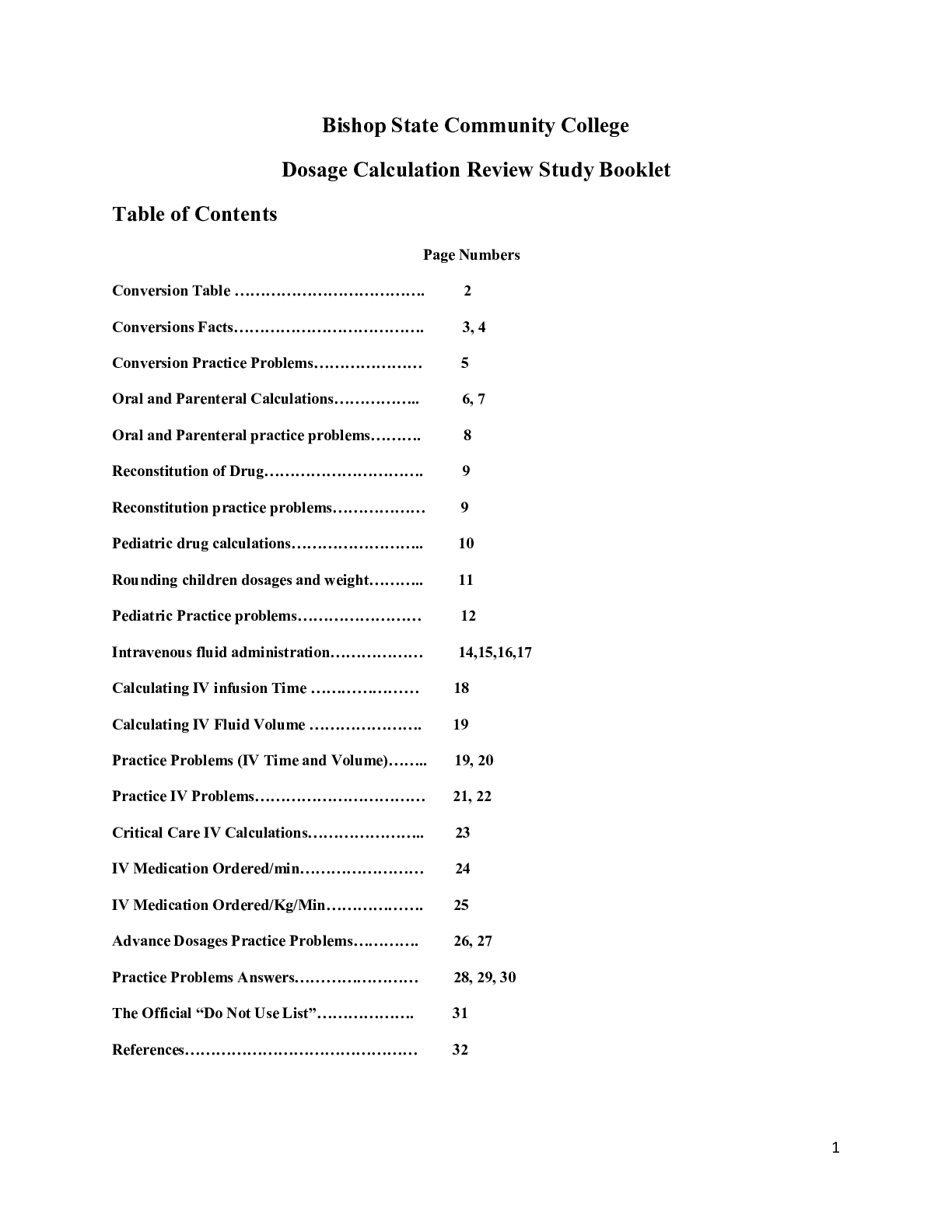
.png)
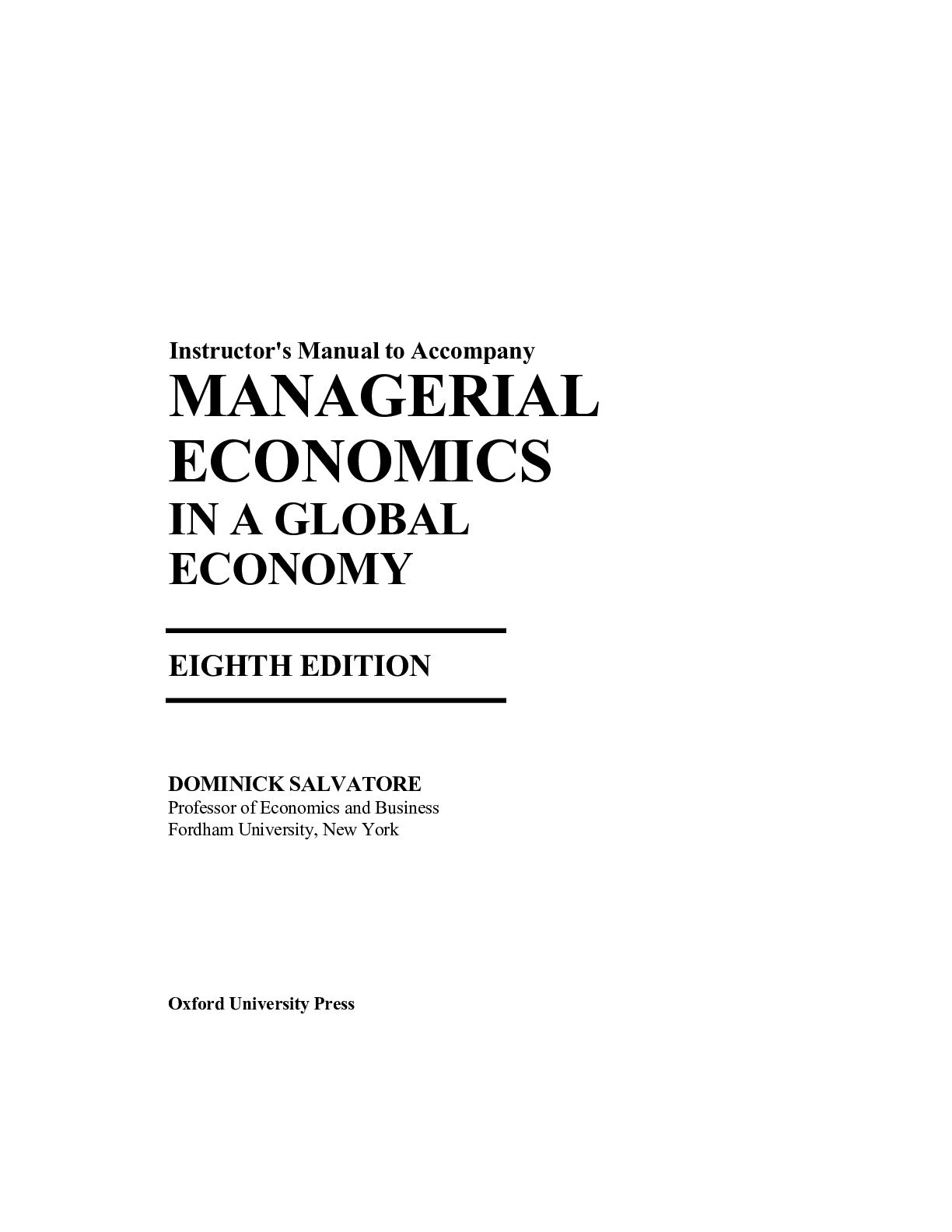
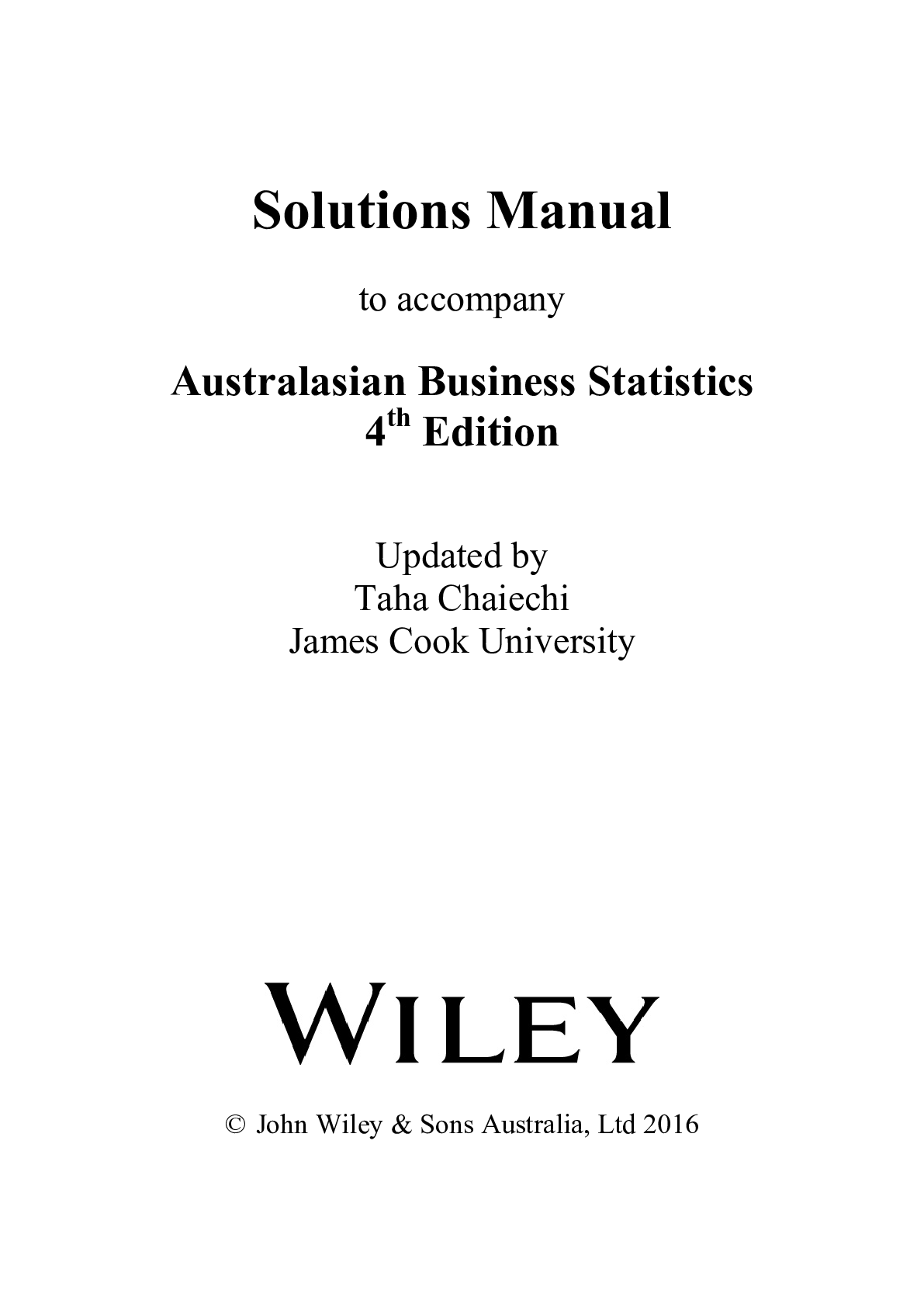

.png)
